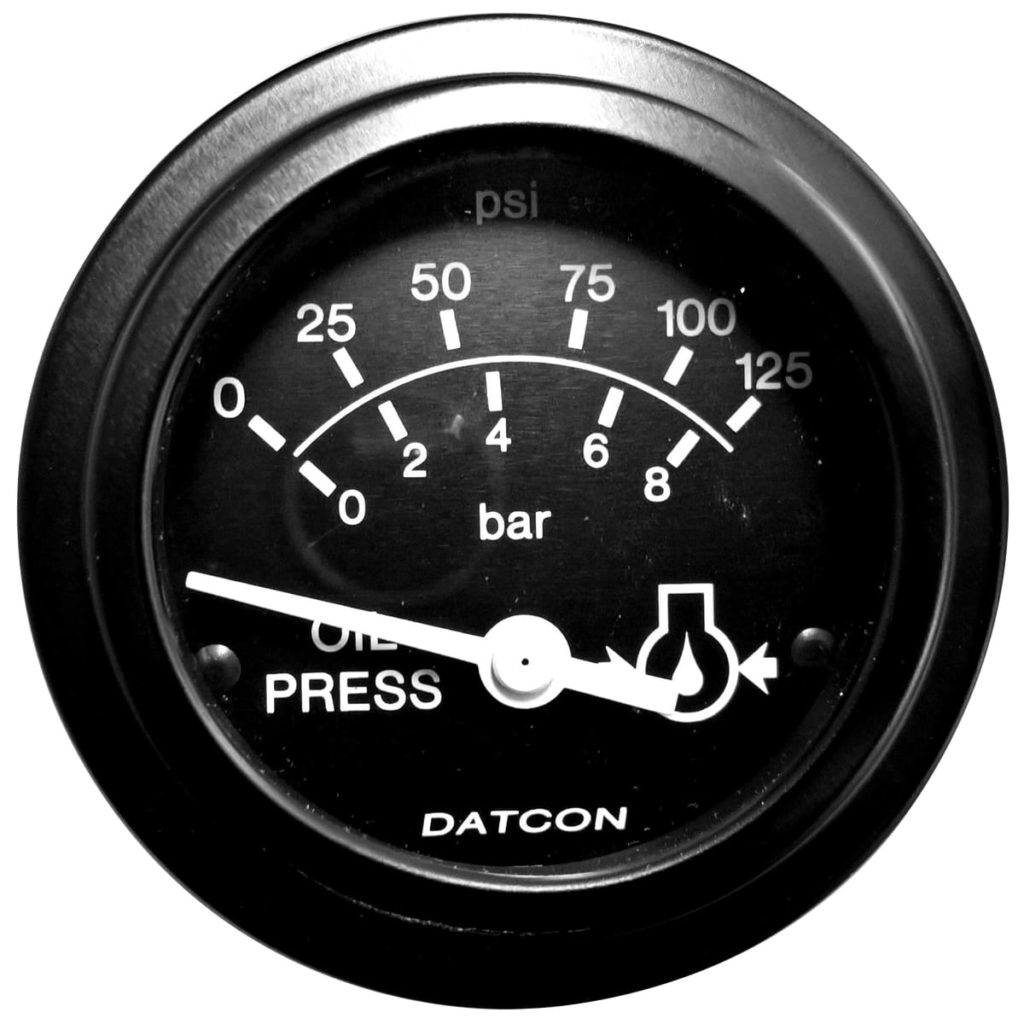The oil pressure gauge is one of your vehicle’s most important instruments. It serves as an early warning system for all sorts of potentially expensive problems—if only you know how to read it.

Oil Pressure Gauge 101
There are two types of gauges: electric and mechanical.
Electric Oil Pressure Gauges
Most modern vehicle’s have electric oil pressure gauges. The power for electric gauges is supplied from one of the many wires stashed behind your vehicle’s dashboard. A current flows through a coil and measures resistance in the instrument’s return wire. This resistance corresponds to oil pressure. Electric gauges are typically easier to integrate into modern circuits, which is one reason they’re installed in the majority of newer vehicle’s.
Mechanical Oil Pressure Gauges
Mechanical gauges use pipes instead of wires. This creates what some technicians consider to be a more trustworthy reading, but it also poses increased risk. Instead of measuring resistance with electrical currents, mechanical gauges funnel oil into small pipes at the same pressure it flows in the engine. If anything punctures the oil pipe, it could start spewing oil at engine pressure! Because of this, mechanical gauges can require more attention and maintenance than electric gauges.
How to Read an Oil Gauge
Oil gauges look like most indicators on your dashboard. There’s a label (typically “OIL”), numbers (ranging between 1-80 or 1-100), and a dial with an indicator needle. Instead of numbers, some vehicles use “L” and “H” to indicate high or low pressure. For a baseline reading, check your owner’s manual for the manufacturer’s recommendation.
Psst! While almost every vehicle has a system for monitoring oil pressure, not all vehicles have oil pressure gauges on the dashboard. It depends on the make and model. Some vehicles provide a digital reading and others have a dashboard light that flicks on when a change in oil pressure is detected. Refer to your owner’s manual for the final word on where your oil pressure gauge is located and how to read it.
Zero Reading
This is normal only when the vehicle is idling. If this reading occurs at higher speeds it could mean one of three things: 1) the gauge is faulty, 2) the oil level is low, or 3) the oil pump (or its drive) is broken. In any case, switch the engine off and get your engine checked out as soon as possible.
Low Reading
If your oil pressure gauge consistently reads a lower number while the vehicle is idling (typically below 20 or in the lower quarter of the gauge) get it checked out. It could indicate an issue with the gauge (like a leak in a mechanical gauge), but it most likely means an engine component has worn down, creating a drop in oil pressure. By fixing or replacing the part quickly, you could avoid major—and expensive—engine damage down the line.
High Reading
The needle on the pressure gauge should settle at the midpoint after the car has been running for about 20 minutes. If it settles toward the top of the gauge, it could be indicating high oil pressure. The pressure relief valve could be stuck or faulty, or there could be a blockage in the oil delivery lines. Since high pressure could cause your oil filter to burst, switch off your engine as soon as you notice the reading.
Your vehicle’s gauges, indicators, and lights were made to help you! They clue you into issues that may not be readily apparent before they end up costing you significant time and money.
